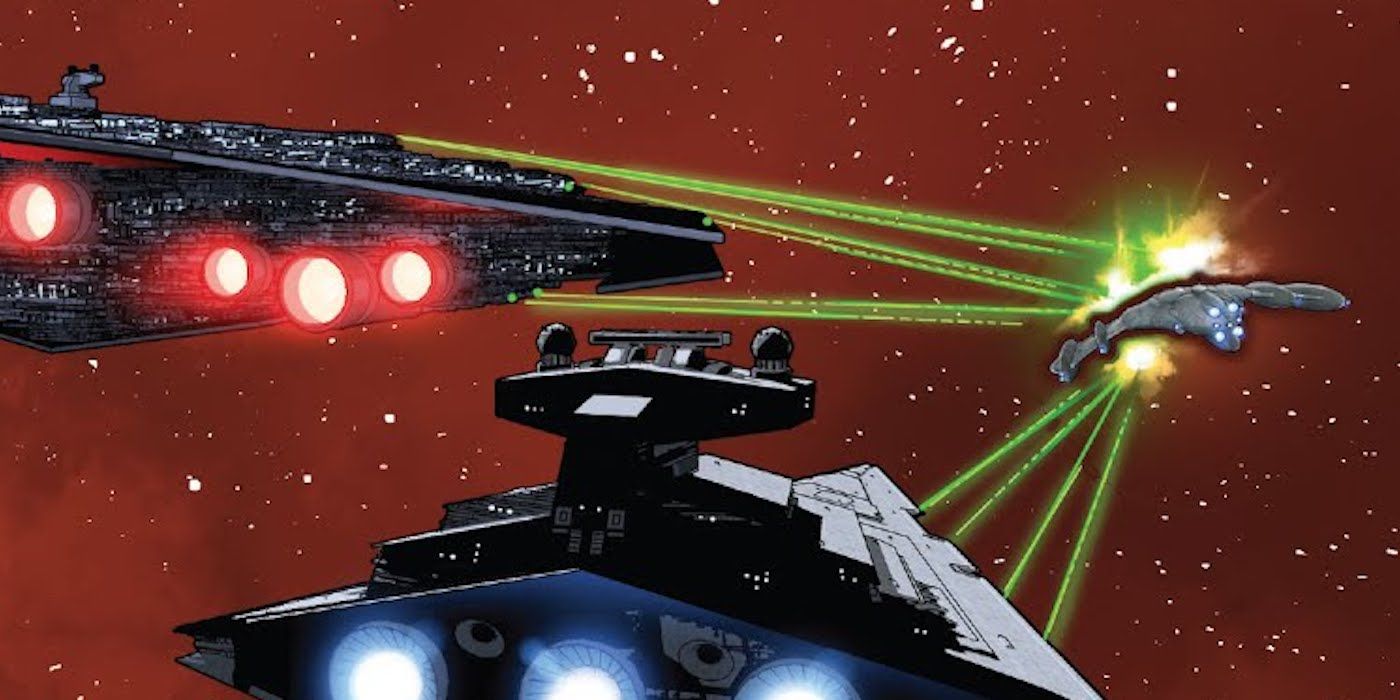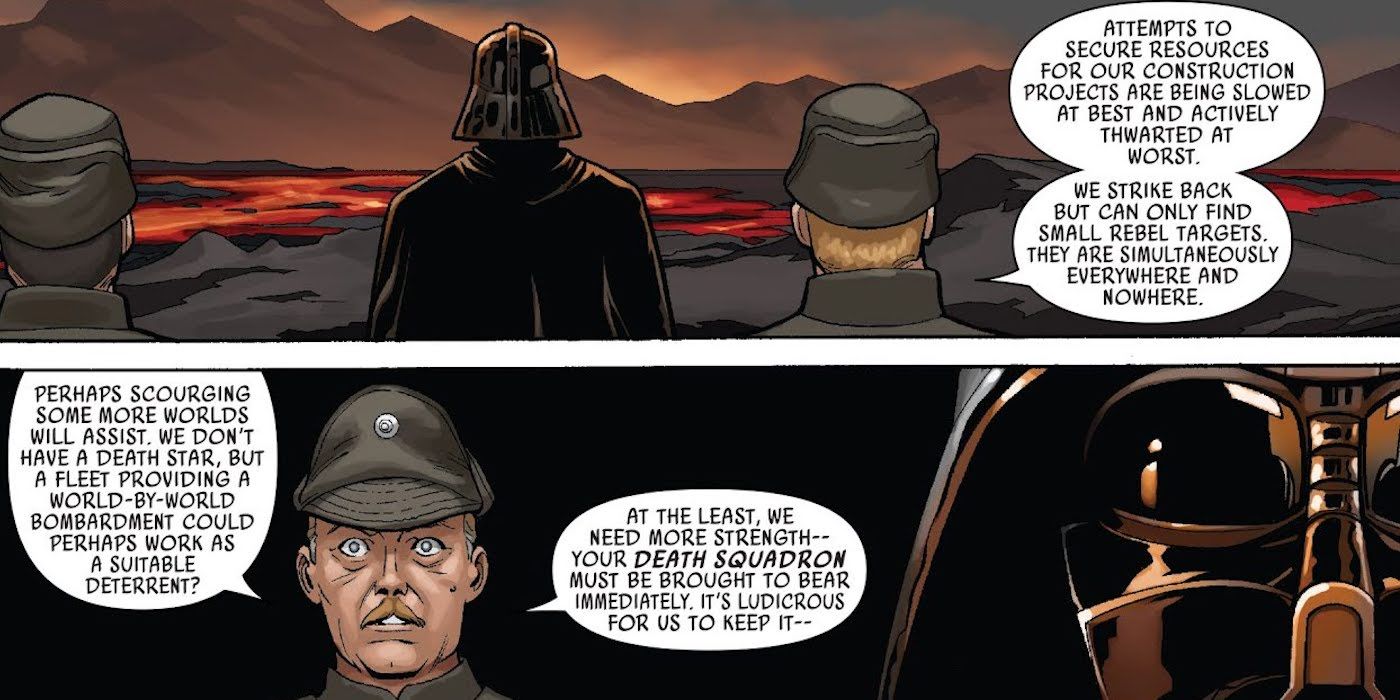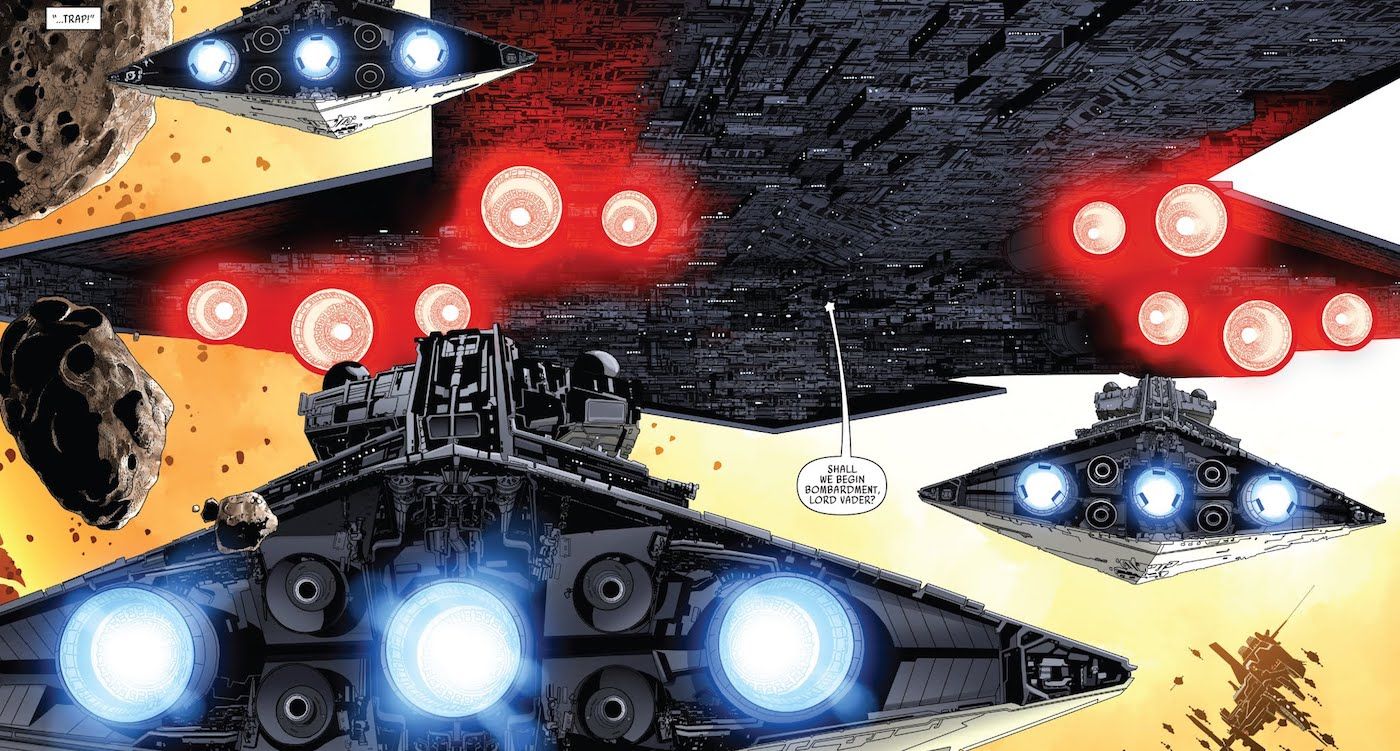WARNING: The following article contains spoilers for Star Wars #50, by Kieron Gillen, Salvador Larocca, Guru-eFX, Clayton Cowles, Giuseppe Camuncoli, Cam Smith and Java Tartaglia, on sale now.
Star Wars has always been chock-full of battle cruisers, star-destroyers, tie-fighters, flagships and various other starship fleets. Of course, what stands out the most would be the Millennium Falcon, the Resistance's X-Wings, and last but not least, the Galactic Empire's Death Star.
The latter is particularly iconic, not just in this franchise, but cinema overall. After it was destroyed in 1977's A New Hope, fans noticed it was temporarily replaced by none other than Darth Vader's Death Squadron, a fleet which the Sith Lord used for star-trekking and colonizing. However, there wasn't any insight into this battalion, with many assuming it was a random squadron Palpatine gave to his enforcer.
RELATED: Chewbacca’s New Co-Pilot On the Millennium Falcon Is…
Star Wars #50, however, paints a more insightful picture, diving deep into the origin of the Death Squadron and exactly why it was used by Vader to patrol the galaxy.
In this issue, we realize the Death Squadron came to life as a direct result of what happened in the Battle of Yavin -- where Luke Skywalker, guided by Obi-Wan Kenobi's Force Ghost, blew up the first Death Star. This left Vader's forces with a lot to answer for, as the Emperor felt his subordinates underestimated the rebels. In short, a response was needed and this is where Vader's new armada came in.
On the big-screen, the Death Squadron was the Sith Lord's personal Imperial armada, consisting of the massive Star Dreadnought Executor, supported by six smaller Imperial-class Star Destroyers. One of Vader's support ships was the Devastator, the flagship he used before the Executor, and the one which pursued Leia's team in particular.
It was quite an intimidating fleet and as we now see, Vader actually deploys the Squadron to soften the blow he'd been dealt in terms of ego and also, because the Empire needed another means of intimidation. In fact, we see the Death Squadron's indeed meant to act as a replacement for the Death Star. Well, at least until the next one would be built for 1983's Return of the Jedi.
RELATED: R2-D2 Speaks (No, Really!) to the Toll Star Wars Has Taken On Him
All this backstory unfolds in a flashback as Vader contemplates his next move at his castle on Mustafar with Admiral Ozzel and General Veers advising. Palpatine's right-hand man is upset the Rebellion is growing bigger in the wake of their victory and Ozzel offers up this solution to a "galvanized Resistance." He urges Vader to move from world to world with this fleet in order to mine different planets of the resources the Empire needs, but also to strike fear and terror across the galaxy. They need to save face, basically.
As Vader questions Ozzel's plan, scaring him in the process, Veers make a couple great points, by appealing to Vader's thirst for revenge. He elaborates that the Rebellion isn't a tree, which would be hard to uproot. Instead, he believes they're weeds that "will continue to slip through our fingers." It's similar to the insult Leia gave to Grand Moff Tarkin and Vader in A New Hope, telling them other star systems will escape their wrath because they're all united against tyranny and oppression.
Vader, remembering this slight, finally agrees with them, ready to raze worlds and hunt rebels more than ever. When his spy, Queen Trios of Shu-Torun, sells out a meeting of the Rebel Alliance on Mako-Ta, Vader takes the opportunity to debut his Death Squadron.
RELATED: A Jedi Betrays The Rebel Alliance In Marvel’s Star Wars Comics
And it's quite a deadly introduction because Vader, after toying with the rebels until their fear builds up, orders a full-scale assault. As this happens, Trios escapes, leaving the rebels ships sabotaged and under heavy fire. Ironically, Vader makes it clear that this arc, titled "Hope Dies!," is very much so reprisal for what happened to the Death Star, and he wants as much blood as possible to be spilt to make up for the big hit they took in A New Hope's finale.



